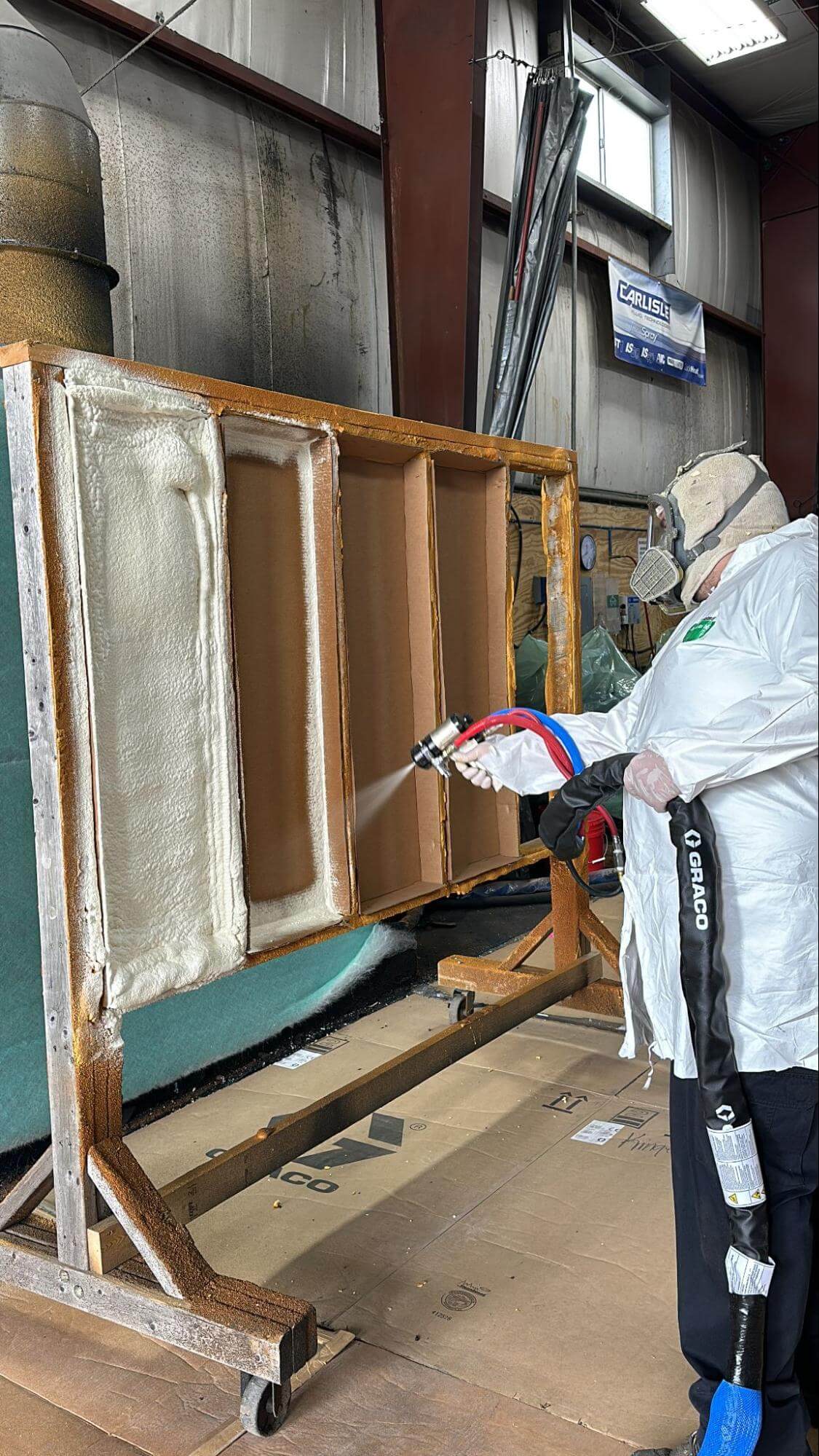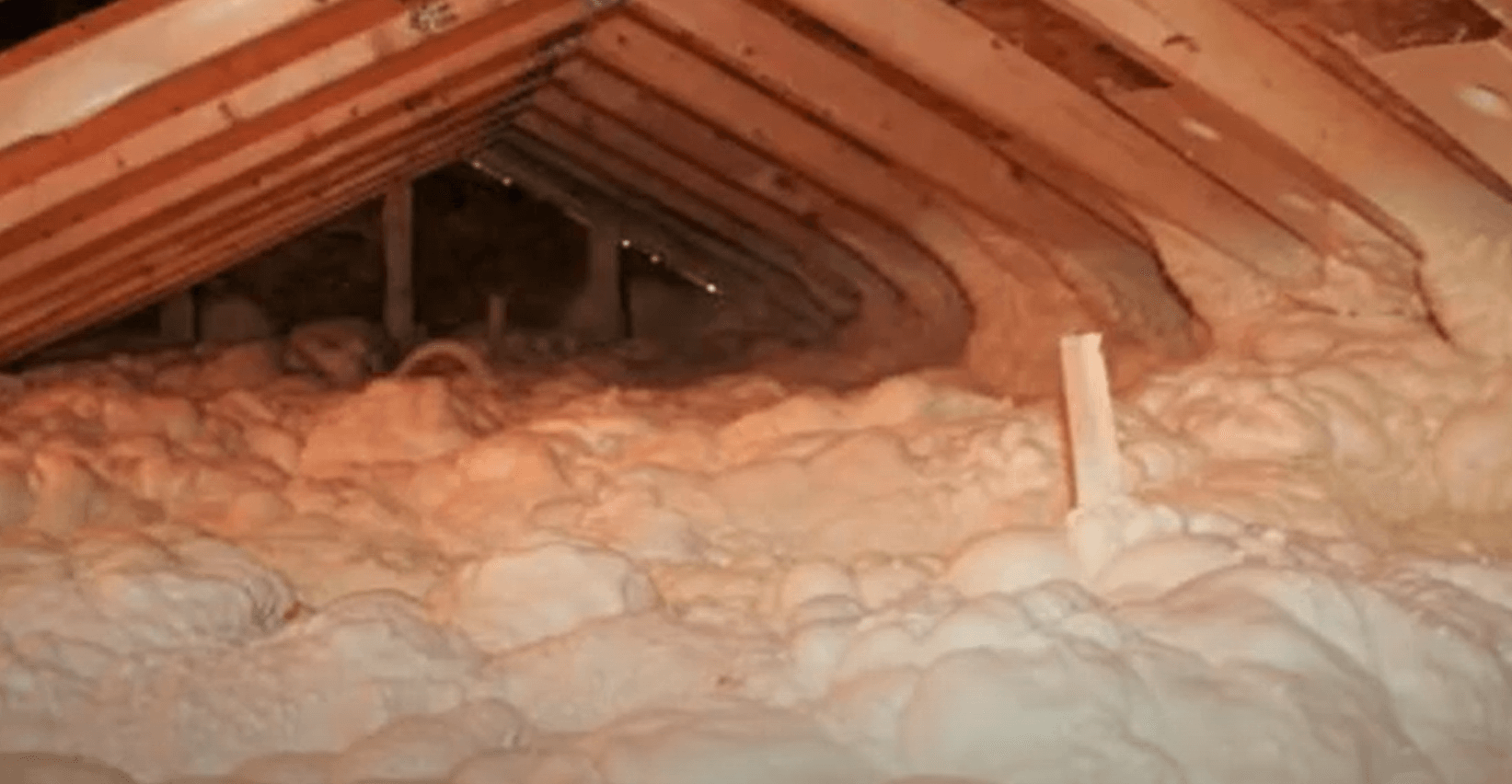Understanding Open Cell vs. Closed Cell Spray Foam Insulation

When it comes to spray foam insulation, open cell and closed cell are the two main types. As contractors, it’s important to choose the appropriate foam option for each specific application. The right spray foam can:
- Improve the quality and efficiency of your work
- Lead to better overall results
- Boost satisfaction among your clients
“Choosing the right spray foam insulation for your project is crucial because it directly impacts the energy efficiency, comfort, and longevity of your building. High-quality foam creates a seamless barrier against air and moisture infiltration, reducing energy costs and enhancing indoor air quality.” — Jed Stellmacher, owner at Oak Ridge Foam & Coating Systems, Inc.
Whether you’re just starting your spray foam business or trying to figure out the best option for a specific project, review the following key differences and use cases for open cell and closed cell spray foam to help you decide what’s best for your project.
Open Cell Foam Insulation
Characteristics
- Structure & Expansion: The cells (small bubbles that form the foam) are not completely encapsulated, allowing air to fill the gaps. As air fills the cells, foam expands to fill tight, hard-to-reach areas.
- Density: About 0.5 pounds per cubic foot.
- R-Value: About 3.5 or 4 per inch.
- Permeability: While it provides protection, the soft, flexible nature of this foam means it’s more permeable to sound, moisture, and air.
Benefits
- Cost effective: Open cell spray foam is generally less expensive than closed cell foam due to its lower density and material requirements. It’s a great option for budget-conscious projects where customers want to balance cost with insulation quality.
- High Expansion Rate: Because this type of insulation expands significantly upon application, you can easily fill gaps, cracks, and hard-to-reach areas that may be difficult to fully cover with closed cell foam.
- Ease of Application: Its expansive nature and lower density makes open cell foam easy to apply and reduces installation times, allowing you to tackle more projects.
Use Cases
Due to its expansion and flexible structure, open cell foam is suitable for a variety of commercial and residential applications where the temperature, humidity, and moisture are more controlled. It’s also great for those tight and difficult-to-reach spaces. Common use cases include:
- Interior Walls
- Attics
- Floors

Closed Cell Foam Insulation
Characteristics:
- Structure & Expansion: The cells in this type of foam are fully encapsulated and packed tightly together, making it more rigid. It expands significantly less than open cell foam, but creates a strong, durable surface.
- Density: About 2 pounds per cubic foot.
- R-Value: About 6 to 7 per inch.
- Permeability: The density and rigidness of the foam provides a significant barrier to pets, sound, air, and moisture.
Benefits
- Insulation: Closed cell foam has a higher R-value per inch (typically around 6 to 7), providing superior insulation and improving energy-efficiency for your customers.
- Moisture Resistance: The closed cell structure is highly resistant to water and moisture infiltration, acting as a vapor barrier in moisture-prone areas like basements and crawl spaces.
- Structural Strength: The dense and rigid nature of closed cell foam can actually improve the structural integrity of a building.
- Low Permeability: The rigid structure makes it hard for anything to pass through, including air, sound/noise, and pests.
Use Cases
Closed cell foam is preferred for exterior applications and moisture-prone areas due to its higher R-value, moisture resistance, and structural benefits. Uses cases include:
- Exterior walls
- Interior, exterior walls
- Foundations, basements, and below-grade structures
- Non-temperature controlled structures like crawl spaces, garages and sheds
- Flotation applications such as boats and docks

Other Key Factors to Consider
Both foam insulation options are suitable for a variety of commercial and residential applications. When comparing open cell foam vs closed cell foam insulation and deciding which one is right for a specific job, it’s important to look beyond specific characteristics. Consider the whole structure and scope.
Environmental Regulations and Standards
The Environmental Protection Agency (EPA) and other sustainability-focused organizations are continuously setting and revising standards to help limit environmental impact during building. Understanding and complying with these regulations can impact your choice of foam insulation.
Building Codes and Standards
Different geographic regions and industries have specific building codes that outline the type of insulation that can be used, fire resistance, thermal performance, installation methods, and more. Make sure you review these protocols to ensure safety, efficiency, and legality.
Climate
Climate can impact overall effectiveness of the foam once installed. In very cold, hot, or humid climates, closed-cell foam offers better thermal resistance and moisture resistance. Open-cell foam may suffice in milder climates.
Building Structural Integrity
If your project involves reinforcing the structure, closed-cell foam can add the necessary strength and support. This is also a great option for high-use areas like industrial and commercial buildings.
Client Preferences
When debating open vs closed cell spray foam insulation, your customers may have specific budget constraints, environmental concerns, or even long-term performance requirements to consider. Be sure to share the various characteristics and benefits of each type of foam and take their needs and preferences into account
Spray Foam Insulation Options from Oak Ridge

Here at Oak Ridge Foam & Coating Systems, Inc., we work with spray foam contractors and applicators all over the United States. We have a variety of affordable spray foam insulation options to meet your specific project needs.
Oak Ridge only carries the highest quality of spray foam insulation, protective coatings and application equipment.. We pride ourselves on our customer and technical services, we never charge full price for parts and are a one-stop-shop for spray applicators.
Open Cell Foam Options
- .5# — NCFI 12-008
Closed Cell Foam Options
- 1.7# — NCIF 11-033 InsulStar® 1.7
- 2# — Foamsulate CC
- 2# — NCFI 11-017 InsulBloc
- 2# — GacoOnePass F1850
If you need help determining what type of spray foam is right for your next project or need high-quality spray foam, our team of experts is here to assist you. Call us today to discuss your project details.
Learn More:
